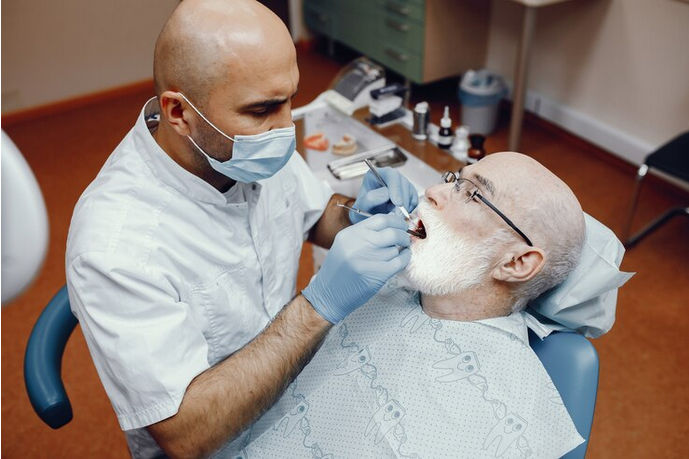Introduction
A radiant smile is not just an aesthetic feature; it's a reflection of one's overall well-being. Healthy teeth play a crucial role in maintaining this smile, but issues like tooth loss and bone deterioration can compromise dental health. Fortunately, advancements in dental science have paved the way for innovative solutions, and one such technique gaining prominence is bone grafting for teeth. This procedure is a game-changer, offering a reliable and effective way to restore not just the aesthetics but also the functionality of your teeth.
Understanding the Basics: What is Bone Grafting?
Bone grafting is a surgical procedure that involves the transplantation of bone tissue to repair or rebuild bones that have been damaged or lost due to trauma, disease, or other conditions. When it comes to dental health, bone grafting becomes particularly relevant in cases where tooth loss has led to a reduction in bone density. The jawbone, which supports the teeth, can lose volume over time if a tooth is missing, leading to a sunken appearance and potential complications for dental implants.
The Need for Bone Grafting in Dental Procedures
To comprehend the significance of bone grafting in dentistry, it's essential to understand why it is often a prerequisite for certain dental procedures, especially dental implant surgery. Dental implants, which are artificial tooth roots, need a sturdy foundation for successful integration. If the jawbone lacks the necessary density, implants may not be securely anchored, leading to potential failures and complications.
Bone grafting addresses this issue by providing additional support to the jawbone. It promotes the growth of new bone tissue, enhancing the structural integrity of the jaw. This not only ensures a more stable base for dental implants but also helps in preventing further bone loss, preserving the natural contours of the face.
Types of Bone Grafts in Dentistry
Dentists employ various types of bone grafts depending on the specific needs of the patient. Autografts involve using bone harvested from the patient's own body, commonly from the hip or jaw. Allografts utilize donor bone, either human or animal, that is processed and sterilized before transplantation. Synthetic grafts, made from materials like hydroxyapatite or calcium phosphate, mimic the properties of natural bone.
The choice of grafting material depends on factors such as the extent of bone loss, patient preference, and the overall treatment plan. Each type has its advantages and considerations, and the dentist will tailor the approach to meet the individual needs of the patient.
The Science Behind Bone Regeneration
The success of bone grafting lies in the body's remarkable ability to regenerate and repair tissues. Once the graft is in place, a process called osteoconduction takes over, where the graft acts as a scaffold for new bone cells to grow. Simultaneously, osteoinduction signals the surrounding cells to differentiate into bone-forming cells, further contributing to the regeneration process. Over time, the grafted bone integrates with the existing jawbone, creating a robust and stable foundation for dental implants or other restorative procedures.
Benefits of Bone Grafting for Teeth
- Improved Aesthetics: Bone grafting helps in maintaining the natural contours of the face, preventing the sunken appearance often associated with tooth loss. This, in turn, contributes to a more youthful and aesthetically pleasing smile.
- Enhanced Functionality: By restoring the density and strength of the jawbone, bone grafting improves the stability of dental implants. This ensures that the artificial teeth function just like natural ones, allowing for comfortable chewing and speaking.
- Preservation of Facial Structure: Tooth loss can lead to changes in facial structure over time, affecting the symmetry of the face. Bone grafting mitigates this by preserving the volume and shape of the jawbone.
- Prevention of Further Bone Loss: Bone grafting not only addresses existing bone loss but also prevents future deterioration. This proactive approach is vital for the long-term health and stability of the oral cavity.
Conclusion
In conclusion, bone grafting for teeth is a transformative dental procedure with the potential to empower your smile by addressing the underlying issues of bone loss. The science behind this technique, rooted in the body's natural regenerative abilities, offers a promising solution for individuals dealing with the consequences of tooth loss. From enhancing aesthetics to improving functionality, the benefits of bone grafting extend beyond mere cosmetic considerations.
As dental science continues to evolve, bone grafting stands out as a testament to the innovative approaches aimed at not just treating symptoms but addressing the root causes of dental issues. So, if you find yourself considering dental implants or other restorative procedures, understanding the science behind bone grafting can be the first step towards reclaiming the confidence and joy that comes with a healthy, empowered smile.





Comments